Customer Identity and Access Management (CIAM) software is designed to manage user access to privileged accounts or applications in the organization. Customer identity and access management (CIAM) software is software that provides organizations with a single point of access to their customers.... Read more

Researched and Edited by Rajat Gupta
Last updated: June 2025
Customer Identity and Access Management (CIAM) Software overview
Read buyer's guide
Researched and Edited by Rajat Gupta
Last updated: June 2025
Common Features
Ease Of Connecting Applications
Customer Identity Management
User Experience
User Provisioning
+ 14 more
Unique Features
Dashboard
Role Management
Data Privacy
Encryption
+ 10 more
Pricing
23% Software offers Free Trial
37% Software offers Freemium
Showing 1-20 out of 30


Add to compare
Product Description
Innovatively transforming the realm of customer identity management, miniOrange CIAM is a game-changing solution that promises to redefine the way businesses engage with their customers. This robust and all-encompassing platform is meticulously crafted to elevate customer experiences and ...
Read morePricing
miniOrange CIAM offers custom pricing plan

Add to compare
Product Description
Unlock new possibilities with Incode Omni - an innovative AI-powered Integrated Identity Platform that unlocks endless potential. Built on a foundation of cutting-edge technology and extensive research, Incode Omni redefines digital experiences by offering a comprehensive and privacy-centric ...
Read morePricing
Incode Omni offers custom pricing plan
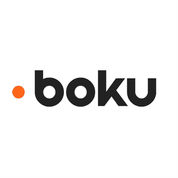
Add to compare
Product Description
Boku Identity is a secure and efficient platform that verifies users' phone numbers for app signups, logins, and transactions. With its 2 Factor Authentication, it ensures the integrity of high-value transactions and protects user accounts from fraudulent activities. Businesses of all sizes, ...
Read morePricing
Starts from $0.04/Successful Verification, also offers free forever plan

Add to compare
Product Description
SecZetta Customer Identity platform is a powerful solution for developing and overseeing customer identities to attain a smooth customer experience. With SecZetta's NE Profile & NE Access suite, customers have the ability to access your brand through multiple channels - online, in-store, social ...
Read morePricing
SecZetta Customer Identity offers custom pricing plan

Add to compare
Product Description
Persona is a revolutionary identity verification tool that helps businesses of all sizes make accurate and informed decisions. It enables organisations to instantly verify consumer identity with secure actions such as collecting IDs, documents and other data. In addition, Persona lets companies ...
Read morePricing
Persona offers custom pricing plan
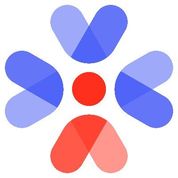
Add to compare
Product Description
Passage is an intuitive biometric authentication solution that makes it easy for developers to seamlessly integrate modern authentication into their favorite tech stacks. React, Vue, Angular, Rails, Django or any other tech stack are supported, reducing friction for users while providing ...
Read morePricing
Passage offers custom pricing plan

Add to compare
Product Description
Kinde is an innovative development infrastructure designed to empower software teams and businesses to take their performance to the next level. With its simple setup and intuitive SDK and API integration, Kinde provides an optimised and high-performing solution that is fully scalable. Get ...
Read morePricing
Kinde offers custom pricing plan

Add to compare
Product Description
ClearDil is the ideal platform for operational security and customer authentication. It has been designed specifically to make identity verification easy and accurate. This risk-adjusted and up-to-date system keeps companies compliant with worldwide cyber regulations with stringent global AML ...
Read more
Add to compare
Product Description
Introducing FTx Identity, the ultimate age verification and identity management solution. This innovative software provides a unified authentication and authorization platform that eliminates fraud on all platforms- desktop, mobile, web. FTx Identity offers a convenient single sign-on ...
Read morePricing
FTx Identity offers custom pricing plan

Add to compare
Product Description
Rownd is an innovative data privacy solution that helps businesses and organizations monitor and manage their customer data privacy. The platform offers end-to-end privacy experiences to users and their customers, empowering them with personal data privacy controls. It ensures compliance with ...
Read morePricing
Starts from $19/Month, also offers free forever plan

Add to compare
Product Description
Clerk is a simple, comprehensive user management system designed to help companies of all sizes. It features pre-built frontends that can be customized with APIs and a secure dashboard to monitor user activity. With its advanced security features and easy to use account settings, Clerk ...
Read morePricing
Starts from $0.02/User/Month, also offers free forever plan
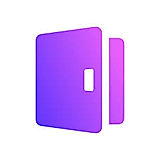
Add to compare
Product Description
Logto provides a secure, modern customer identity infrastructure for companies of any size. It is an effective, efficient Auth0 alternative that gives maximum control with minimum effort. Logto puts data privacy and security first, equipping you with the state-of-the-art tools for ...
Read morePricing
Starts from $16.00/month when Billed Yearly, also offers free forever plan

Add to compare
Product Description
Userfront is a comprehensive Customer Identity and Access Management (CIAM) software designed to provide secure and compliant access for applications and AI tools. It enables seamless Single Sign-On (SSO) for both customers and workforce, ensuring a frictionless authentication experience for ...
Read morePricing
Userfront offers custom pricing plan
_community_bundle/logo_1655124987.4979062.png)
Add to compare
Product Description
Tappd(in) Community Bundle, developed by IDENTOS, is a Customer Identity and Access Management (CIAM) software designed to create connected patient experiences through secure identity-aware consent and authorization services. Built on a cloud-native architecture, it ensures scalability, ...
Read morePricing
Free Trial available
Tappd(in) Community Bundle offers custom pricing plan

Add to compare
Product Description
Sphere Identity is a global identity provider offering a self-sovereign platform that empowers both businesses and individuals. By adopting a Privacy-by-Design approach, it addresses contemporary challenges in identity and security. The platform enables businesses to seamlessly onboard users ...
Read more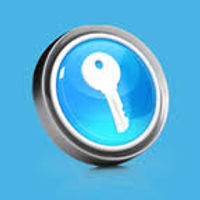
Add to compare
Product Description
Sentry Login is a robust Customer Identity and Access Management (CIAM) solution that has been serving businesses since 2001. It seamlessly integrates with platforms like Squarespace, Weebly, and WordPress, enabling organizations to implement secure paywalls and password-protected member areas. ...
Read morePricing
Free Trial available

Add to compare
Product Description
ReachFive is a leading Customer Identity and Access Management (CIAM) platform engineered to enhance modern customer experiences by seamlessly integrating identity management across various channels and devices. The platform offers robust features such as secure customer authentication, ...
Read morePricing
ReachFive offers custom pricing plan

Add to compare
Product Description
OneWelcome is a robust Customer Identity and Access Management (CIAM) solution designed to help businesses securely manage digital identities while ensuring compliance with industry regulations. The platform provides advanced authentication methods, including multi-factor authentication (MFA) ...
Read morePricing
OneWelcome offers custom pricing plan

Add to compare
Product Description
Meeco is a cutting-edge Customer Identity and Access Management (CIAM) solution that empowers businesses to provide secure, privacy-centric digital experiences. The platform specializes in decentralized identity management, allowing users to control and share their personal data securely while ...
Read morePricing
Meeco offers custom pricing plan
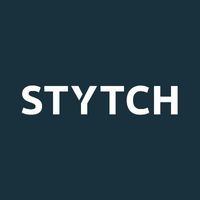
Add to compare
Product Description
Stytch is a modern Customer Identity and Access Management (CIAM) solution designed to enhance security while streamlining authentication processes. The platform provides frictionless, passwordless authentication options such as email magic links, SMS one-time passcodes, OAuth, biometrics, and ...
Read morePricing
Stytch offers custom pricing plan
Disclaimer: This research has been collated from a variety of authoritative sources. We welcome your feedback at [email protected].
Connecting Smart Buyers with Leading Sellers
Find the perfect software for your needs or showcase your product to 250,000+ buyers. SpotSaaS makes it easy for everyone to succeed